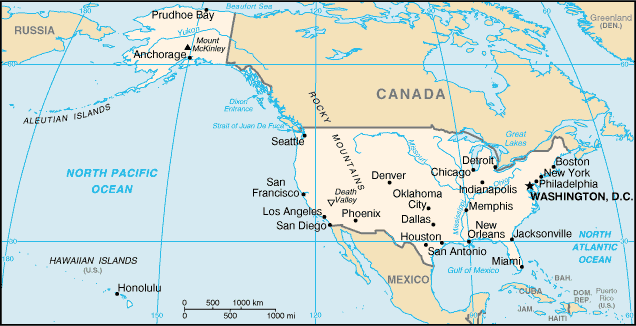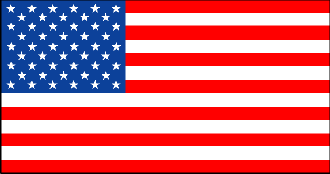
|
United States
Background:
Britain's American colonies broke with the mother country in 1776 and were
recognized as the new nation of the United States of America following the
Treaty of Paris in 1783. During the 19th and 20th centuries, 37 new states were
added to the original 13 as the nation expanded across the North American
continent and acquired a number of overseas possessions.
|

Climate and Terrain:
Climate: Mostly temperate, but tropical in Hawaii and Florida, arctic in
Alaska, semiarid in the great plains west of the Mississippi River, and arid in
the Great Basin of the southwest; low winter temperatures in the northwest.
Terrain: Vast central plain, mountains in west, hills and low mountains in
east; rugged mountains and broad river valleys.
Economy overview:
The US has the largest and most technologically powerful economy in the world,
with a per capita GDP of $36,300. In this market-oriented economy, private
individuals and business firms make most of the decisions, and the federal and
state governments buy needed goods and services predominantly in the private
marketplace.
|
|